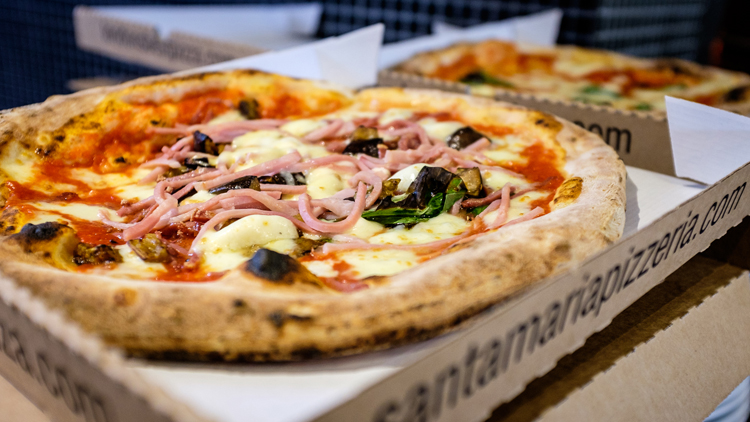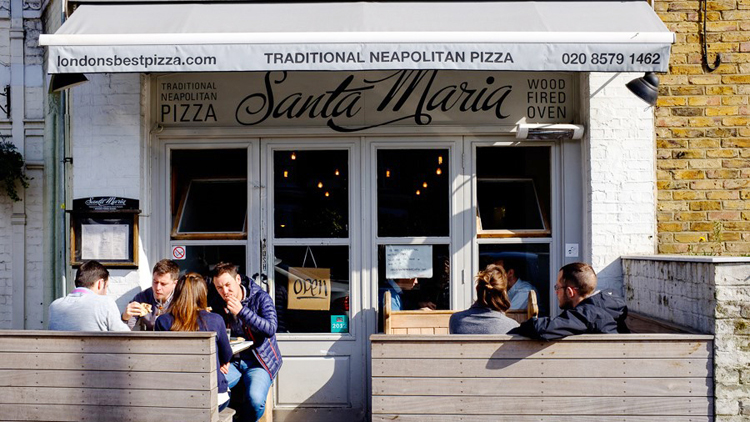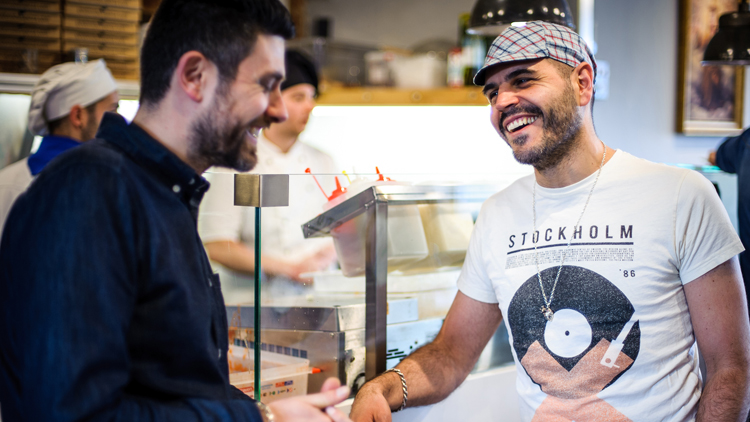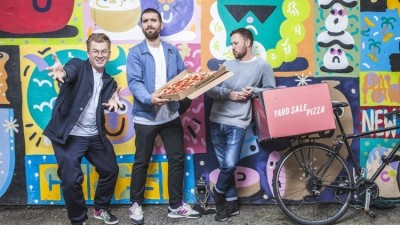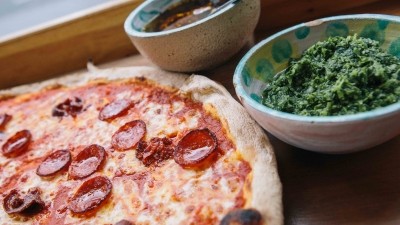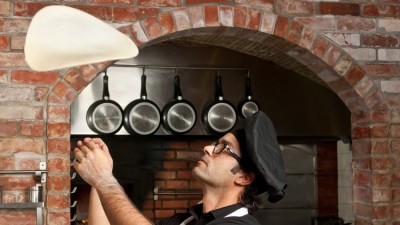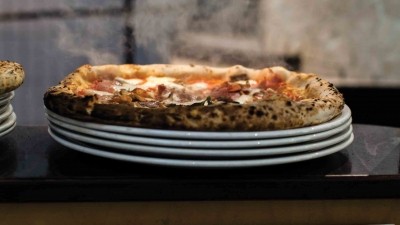Business Profile
The Santa Maria team on their pizza rivals and defending Neapolitan honour
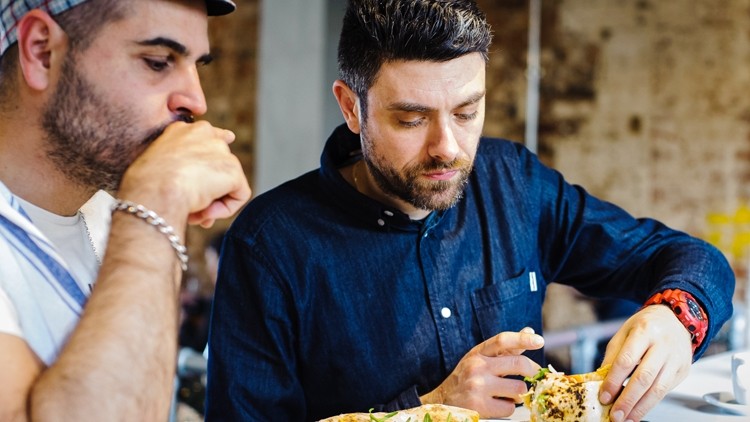
The pizza market in the UK may be in rude health at the moment, with relative newbies such as Franco Manca, Homeslice, Pizza Pilgrims, Yard Sale Pizza (winner of Best Cheap Eats at last month’s Observer Food Monthly Awards) and Radio Alice continuing to grow across the capital and beyond, but in the minds of Pasquale Chionchio and Angelo Ambrosio there is only one pizzeria of any substance – and it’s of their own making.
In fact the Naples-born friends behind the two (soon to become three) strong pizza brand Santa Maria don’t have many positive words for their rivals, despite them having played a key role in the growth of the pizza sector over the past few years. If they aren’t making truly authentic Neapolitan pizza then they don’t want to know.
“Pizza for us is a religious thing,” says Chionchio, without a hint of hyperbole. “For a Neapolitan, pizza is everything, it is the best thing that can happen to you.”
The duo, who have been friends since their teens, don’t mince their words when describing how and why Santa Maria came to be. The first restaurant opened its doors in Ealing on Valentine’s Day in 2010, an apt date for the romantic vision that they had for London’s pizza lovers.
“We have always worked and lived together, and we knew that sooner or later we were going to start something together in terms of a business, although we didn’t know what,” according to Chionchio, who says that the idea for a pizzeria came about after trying all the pizzas in London and finding that none of them were as good as the ones from back home.
“Being from Napoli we are always looking for the best pizza. We used to live in Brixton and there was a pizza place that was getting very popular there called Franco Manca. We tried it and thought ‘OK, now is the time to do our own pizzeria if this place is successful for doing something that is not even close to what is supposed to be called pizza’. It was time for us to gather our energies together to create a place where we can be as authentic and as close to Neapolitan pizza as possible.”
The pair aren’t going to win an award for diplomacy any time soon but are steadfast in their views that, until they came along, proper Neapolitan pizza simply didn’t exist in the capital. With Santa Maria they see themselves not just as restaurateurs, but as defenders of Neapolitan honour. “We have a name and a heritage to defend. There are years of history on our shoulders. Being a Neapolitan is a responsibility. It’s a pride thing.”
Changing pizza perceptions
If this sounds slightly over the top then Chionchio and Ambrosio aren’t kidding. When we meet in their Chelsea restaurant the animated Italians speak passionately and at length about the many nuances of Neapolitan pizza – they continually interrupt each other and at times talk simultaneously, making it hard to hear what each is saying. When it comes to the pizza of their homeland they wear their hearts on their sleeves.
They describe their rivals as “exploiting what we love so much” and pour disdain over some pizza groups’ use of sourdough – “in Naples pizza is not done with sourdough, that is used to make bread” - although they do, somewhat begrudgingly, admit that “Franco Manca was a milestone in the pizza culture in London, there’s no denying that”. That said, they are under no illusions as to who they believe were really behind authentic pizza becoming ‘a thing’ in the capital.
“We started a movement,” says Ambrosio. “If you see a pizzeria promoting itself as traditional Neapolitan it will most likely look like us. We are quite proud of that.”
Putting the chutzpah to one side for a moment, it’s hard to deny Santa Maria’s impact on the pizza sector. Their tiny Ealing restaurant of 16 covers – it has since been extended to 34 covers including outside space – was a smash from the start, with constant queues of people looking to get their hands on their pizzas.
Critics raved about them, bloggers went giddy over them, newspapers wrote at great length on what made them better than anyone else’s. Franco Manca had been recognised for laying the foundations for better quality pizza in the capital, but Santa Maria was building upwards from this.
“We were educating people on how pizza was supposed to be,” says Ambrosio of the early days of Ealing. “In a way we were against the customer when they asking for a crunchy or deep-pan pizza. We said ‘no this is what we serve. This is how Neapolitan pizza is supposed to be. If you want it crispy, PizzaExpress is over there; if you want deep pan then Domino’s is down the road and we’ll give you directions’. We asked them to give it a try and if they didn’t finish it they didn’t pay. A lot of people tried it, were happy and still come back to this day. Looking back we were quite revolutionary in terms of showing people what proper Neapolitan pizza should be.”
The pair had initially intended to serve around 30 pizzas on the first day, but ended up doing closer to 300. “It was overwhelming, we didn’t know what to do,” recalls Chionchio. “We were kicking people out to make space.”
A thousand small details
That two friends with no cheffing or restaurant experience have made such an impact on London’s restaurant scene is impressive. They put it down to growing up in Naples, captivated by the passion that surrounded pizza there from an early age – as well as employing master pizza chefs Lucio Miano Petta and Emanuele Tagliarina to ensure the pizzas made the grade.
“We are not pizza chefs, but from the background we come from pizza has been a big part of our lives,” says Chionchio, “From early on we saw how it was made – we didn’t know the rules and specific techniques but we saw the way the dough was made and put onto the peel. We had long studied the movement of the pizzaola. When you’re five years old it is fascinating to see a doughball turned into a pizza in just a couple of minutes.”
Moreover, the pair believe their many years of eating Neapolitan pizzas put them in good stead. “Most importantly we knew how it was supposed to taste,” he adds. "When we tried the first pizza and it tasted like it was supposed to taste I couldn’t believe we’d managed it.”
So what’s the secret to making authentic Neapolitan pizza? The answer, as you might expect, isn’t a simple one. “It’s a thousand small details. There is not a specific way of making a pizza,” says Ambrosio. “Otherwise there would be many more good pizzerias around.”
Instead, it comes down to experience, as well as the cooking environment and humidity, the flour used, the temperature of the water, the time of day, even the temperament of the chef. How a chef handles the dough, for example, plays a big part. If they are too rough with it, the dough will become stressed and the vital air pockets become squashed. “When you press the dough too much there is not enough air and so the dough won’t have the strength to rise,” says Ambrosio.
Even the concept of leopard spots – the little blisters of charred material along the pizza’s end crust – isn’t straightforward. “Leopard spots is a tricky one. In Naples if you get a pizza with spots you might end up with it thrown at you as it often means the dough hasn’t risen properly or was too cold. A pizza should have brownish spots like camouflage – when you see black spots there’s something wrong as it means the dough has risen too fast and has just burnt.”
The use of flour is also crucial. Instead of using just one type of flour, Santa Maria uses two – Caputo Red and Caputo Blue – which it mixes itself using percentages based on proving times and how quickly the pizzas are needed.
“Caputo Red makes an elastic and strong dough that gives crispiness so in Naples it is used for certain pastries, whereas most people use Caputo Blue for pizza as it is soft,” says Ambrosio. “We add a bit of red to our recipe to give a bit of strength to our dough.”
Measured growth
The various challenges of creating authentic Neapolitan pizzas consistently has meant that Chionchio and Ambrosio haven’t felt able to expand as quickly as their rivals. Restaurant number two, in Chelsea, came some six and a half years after the Ealing debut, with the pair finally overcoming their fears that having more than one site would prove fatal for the quality of their pizzas.
“It took a while for us to decide to open another one,” admits Ambrosio. “We always thought that if we did another we wouldn’t be able to replicate the product.”
With its key chefs staying within the business and more having been trained up, the pair eventually realised that they had a committed team that could handle a second site. However, it was an approach they received from a bigger player that would eventually prove the catalyst for expansion.
“One particular episode convinced us,” says Chionchio. “A big pizza group wanted to buy us and makes us part of their brand and that was a ringing of a bell moment. We realised that if we were so appealing and a big company wanted to open more Santa Marias then we have potential. But let’s not allow some shark to do it, let’s do it ourselves.”
As well as opening in Chelsea the pair have taken on the pub next door to the Ealing site which they still run as a pub rather than a restaurant, although the London Pride drinkers, as Chionchio calls them, are slowly making way for families as the place becomes more food led. As well as its pizzas, the pair have created a more pub friendly offer that includes a burger and sandwiches, although it is replacing the Naples-style sandwiches it served because they were considered to be too big and heavy. In their place comes the panuozzo, a mix between a pizza and a sandwich – pizza dough is stretched to an oval sandwich shape before toppings such as parma ham, chorizo and wild broccoli are added. It is then cooked in the pizza oven and folded over and served with skin-on chips.
Fitzrovia, meanwhile, marks Santa Maria’s first move into central London. Planned in response to regular customer requests for a restaurant within striking distance of work or home, the pair will use this site as the bellwether for future openings. “This is the final test,” says Chionchio. “If we are good enough in Fitzrovia we might go further. Or we will stop if we are not.”
Quite how far they are prepared to go is unclear. The pair had considered opening a site in Bethnal Green but pulled away from it over licensing issues, although an east London location is still on the cards. But they certainly aren’t intending to follow in the expansion footsteps of Franco Manca, or indeed Pizza Pilgrims.
And even though Fitzrovia will open just a year after Chelsea, this is by no means a sign that the expansion floodgates are now open.
“I like to check the pizzas still come out properly,” says Chionchio, when discussing how many sites Santa Maria could open. “I still want to be in that position as we grow. As such, Santa Maria is likely to remain that all-to-scarce commodity – a casual dining restaurant brand that isn’t intent on rapid growth.
“We never thought making pizza was a business, it was a mission,” he adds. “We still don’t see it as a business. We are bad businessmen, but good Neapolitans.”
This interview first appeared in the November issue of Restaurant magazine, the leading title for the UK’s restaurant industry. For more features, comment, interviews and in-depth analysis of the restaurant sector subscribe to Restaurant magazine here.
